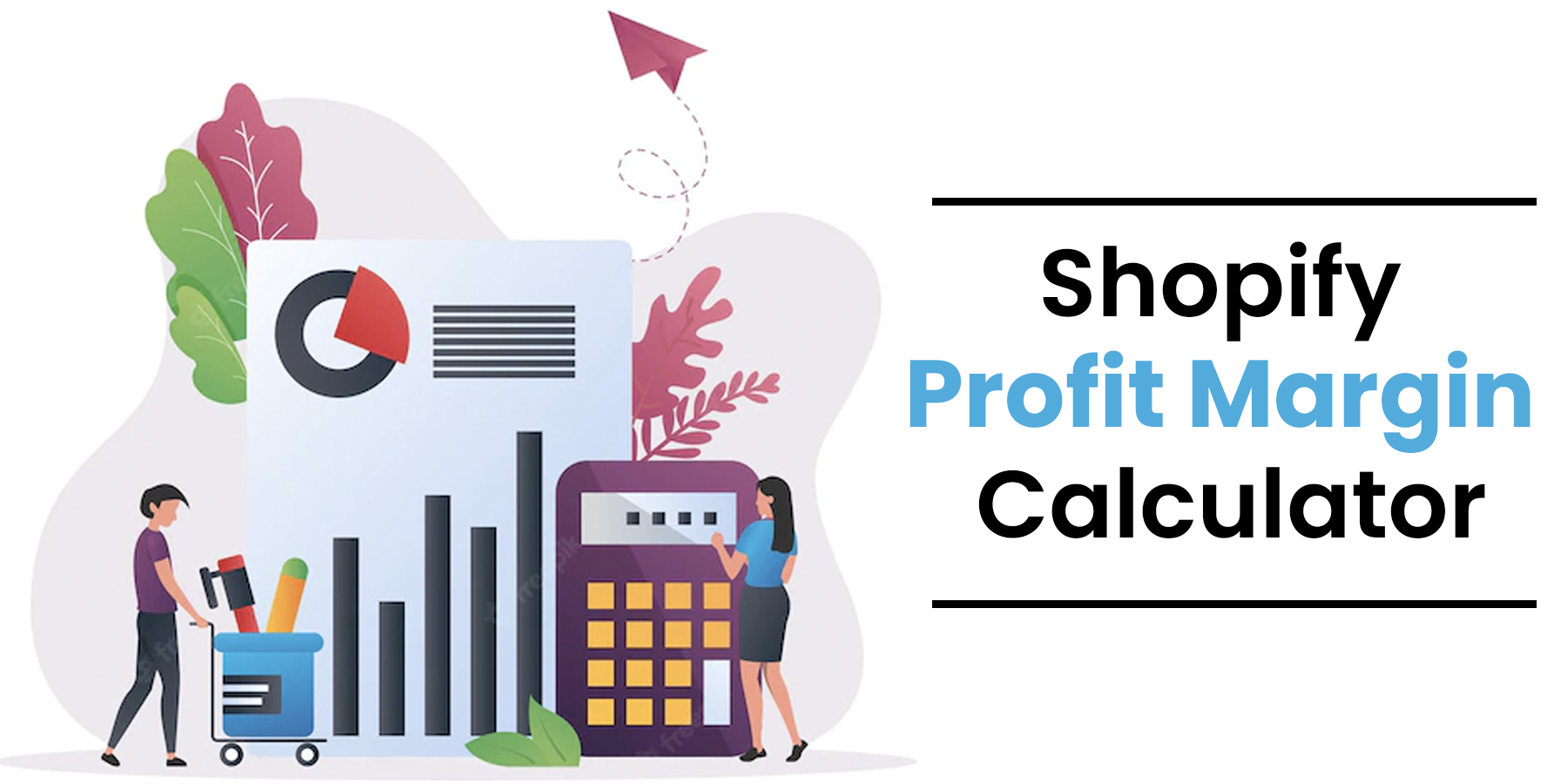
Your company is probably currently dealing with several pressures, such as managing cash flow, maintaining client satisfaction, and figuring out how to boost your profit on your Shopify product pricing standard.
The management and expansion of Shopify’s profit margin are essential to your company’s financial performance in increasing profitability. For individuals who want to operate a profitable online and offline business, it’s a crucial small business accounting approach.
The sole issue? The world of profit margins can be complex, especially without the help of a profit margin calculator. Understanding profit margin ratios, operational profit margins, net versus growth, and other concepts might need to be clarified. Overcoming the information deluge and learning how to boost your company’s earnings might also be challenging.
A Good Profit Margin
What is a decent net profit margin, you may be asking yourself?
“you’re headed in the correct direction. Your company’s ability to make a profit will depend on your region, industry, and individual circumstances.
Industrial banks, for instance, had the highest reported profit margin in 2019, with an average of 51.8%. According to the same study, manufacturing had average profit margins of roughly 8.5 percent.
Compared to other industries, retailers typically have a low-profit margin:
- Profit margins for physical stores typically range from.5 to 4.5%.
- The best profit margins are seen in building supply and distribution stores, where they can reach as high as 6.5%. Web-based shops typically have higher profit margins.
Retail margins have remained mainly low due to the increase in online purchasing. As a general rule, a 10% net profit margin is regarded as ordinary, a 20% margin as high, and a 5% margin as low. Check out the typical profit margin for your sector if you want to compare the success of your business based on profit and merchandise margins.
Shopify Profit Margin Calculator
Are you looking for the best way to calculate your profit margin on Shopify stores? Try this Shopify profit margin calculator today! You’ll get accurate results instantly without having to do any math or manually enter numbers into your calculator.
Profit margin calculator
Profit margin calculator Results
How to Increase Your Shopify Profit Margin?
1. Lower Operating Expenses
Profitability can be quickly improved, and Shopify profit margins can be quickly raised by lowering operational costs.
It is difficult to know what to trim from expenses like utilities, payroll, and rent because they differ from business to business.
Start by conducting an audit of every aspect of how your organization is run, including
- Labor charges
- Facilities for offices
- employee advantages
- Equipment and upkeep costs
- Tax deposits and license fees,
- Insurance
Then consider where you may reduce spending and how a high-end software package can be useful. Asking yourself the following questions can help you choose the appropriate technology for your company:
- What am I already competent at? (For instance, if business finance is your strong suit, think about productivity or marketing software.)
- What eats up too much time each week for my staff?
- Which one of these time-consuming tasks would I want to eliminate from my life?
Then consider where you may reduce spending and how a high-end software package can be useful. Asking yourself the following questions can help you choose the appropriate technology for your company:
- What am I already competent at? (For instance, if business finance is your strong suit, think about productivity or marketing software.)
- What eats up too much time each week for my staff?
- Which one of these time-consuming tasks would I want to eliminate from my life?
Try to quantify the effects of removing an operating expense from your website, such as a phone number, on margin expansion and client happiness. Small business owners should always seek out new strategies to save costs without compromising the standard of their establishment or complicating operations.
2. Don’t Get Fixated on Per-Order Profits
Many companies are afraid to lose money on orders, especially if doing so means severing ties with a disgruntled or angry consumer. Customers are shocked when a company goes above and above to proactively remedy a problem—without charging them—because they are so used to receiving subpar service. You’ll receive referral marketing and recommendations that are impossible to buy in addition to the lifetime worth of that customer.
Here are four strategies to invest in your company’s future and, ultimately, your long-term bottom line if you run an online store:
- Has something of little value broken? Send free replacements to consumers immediately without making them deal with the return.
- Rather than waiting until it arrives at your warehouse, send them a replacement as soon as they submit tracking information for the return of a costly item.
- Give a long-time customer who needs something urgently a free overnight delivery.
- A proactive partial refund should be given to a consumer dissatisfied with a purchase to help compensate for his unhappiness.
Serving clients this way will initially cost a little bit more, but it will yield great returns as you develop a devoted and passionate fan following that leads to a healthy bottom line.
3. Boost Your Store’s Credibility to Increase Sales
Gaining customers’ trust is crucial for making sales and boosting your Shopify profit margins. Today’s consumers have several options while shopping for a product, most of which are monitored by marketers and business owners. However, trust is more difficult to gauge and fully comprehend.
Shopify is interested in learning what distinguishes a reliable online retailer. In 2019, we conducted a series of interviews with North American consumers asking them to describe a recent purchase they made at a retailer or a product they had never used. Additionally, we urged them to buy something from a Shopify business they had never used before.
The study aimed to determine what makes a new customer confident in purchasing a new item or from a place they were unfamiliar with. Customers were influenced by two patterns while deciding whether or not to purchase a product:
- Builds trust. components or design cues that encourage first-time buyers to feel at ease and assured about their purchase.
- Trust squatters elements that cause first-time customers to doubt the reliability of a company and make them feel uneasy about making a secure buy.
This research also indicated five important ways your online store may win over new customers’ trust and increase online sales:
- Make your homepage pleasant and compelling for potential customers.
- Make it simple to obtain product information by providing detailed product descriptions and accurate search results.
- Tell your brand’s story to give them a sense of your authenticity.
- By giving customers social evidence, you may demonstrate client pleasure.
- Transparency in pricing and transaction expenses
Gaining the confidence of first-time customers will motivate them to shop at your online store, boosting your Shopify profit margin.
4. Boost the Average Order Value
Increase your average order value if you wish to boost your Shopify profit margin (AOV). A customer’s average monetary amount per transaction in your store is known as the average order value.
A straightforward formula can get the average order value: total revenue/number of orders = average order value.
You can raise AOV in your e-commerce store in several ways:
- Add product suggestions to the checkout and product pages. You can raise average order value and switch from low-margin sales to high-margin sales by adding popular products or products that other customers have purchased in addition to what is currently in a customer’s cart.
- Cross-selling or upselling related products You can surface products that pair well with items in a customer’s cart rather than just proposing popular items from your store. For instance, coffee filters for a coffee maker, shaving cream, and blades.
- Offer rewards for minimum order amounts. Encourage clients to spend a minimum amount on improving AOV and obtaining larger margins. This might be a free delivery minimum purchase requirement, which is simple to put up in Shopify, or a 15% discount on purchases above $75.
- Make packages or bundles of products. Create product bundles that are more affordable when purchased collectively than separately to encourage customers to make larger purchases. Bundling products can improve the shopping experience and raise the perceived value of a customer’s purchase.
- Run promotions and sales. Offering coupons or a special on higher-margin products is a terrific method to increase sales for your store. You may afford to temporarily cut the price through alluring promotions because these products generate a bigger profit per unit sold.
5. Establish a Campaign for Customer Loyalty
In the retail and service sectors, customer loyalty programs are a certain way to boost profit margins and profitability. Up to 84% of customers claim they would stick with a business that has a loyalty program. In light of this, 66% of consumers claim that receiving rewards affects their purchasing decisions.
Instead of spending more money to attract new consumers, you might develop a customer loyalty program to sell to existing ones.
Final Thoughts
How much does profit margin play a role in determining whether or not a company makes a profit? One problem many ecommerce sellers face is they cannot accurately calculate their exact Shopify profit margin. The good news is there is now a simple tool that enables them to come closer to achieving their goals. Try our Shopify profit margin calculator today!







